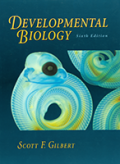Talk:BGDA Practical - Fertilization to Implantation: Difference between revisions
mNo edit summary |
|||
| Line 45: | Line 45: | ||
==Archive== | ==Archive== | ||
* 2014 https://embryology.med.unsw.edu.au/embryology/index.php?title=BGDA_Practical_-_Fertilization_to_Implantation&oldid=135836 | |||
* [[2010_BGD_Practical_-_Fertilization_to_Implantation]] | * [[2010_BGD_Practical_-_Fertilization_to_Implantation]] | ||
Revision as of 11:32, 23 March 2015
Practical 3: Embryology fertilization
Aim
Understand key events in human development from gametogenesis, to fertilization and implantation.
Key Concepts
Gonad, gametogenesis, ovary, oocyte, sperm, meiosis/mitosis, follicle, ovulation, zona pellucida, polar bodies, hormonal changes, mechanism of fertilization, post-fertilization changes, corpus luteum, zygote, morula, blastocyst, zona pellucida, embryoblast, trophoblast, ectopic implantation, abnormalities.
Key Reading
- Schoenwolf, G.C., Bleyl, S.B., Brauer, P.R. and Francis-West, P.H. (2009). Chapter 1, 2, and 3 in Larsen’s Human Embryology (4th ed.). New York; Edinburgh: Churchill Livingstone..
- Moore, K.L. & Persuad, T.V.N. (2008). Chapter 1 and 2 in The Developing Human: clinically oriented embryology (8th ed.). Philadelphia: Saunders.
Online Resource
Introduction
Fertility and infertility issues are a common clinical topic and a scientific knowledge of this process is vital for your ability to explain key concepts to patients. This is also an area where scientific research is still making great clinical changes in regulating fertility (birth control), infertility (in vitro fertilization) and prenatal diagnosis (invasive/non-invasive testing). Note that fertility, infertility, genetic testing and stem cells are key current ethical and legal topics.
The generation of gametes (haploid) in the ovary (oocyte, egg) and testis (spermatozoa) and their coming together at fertilization (diploid) and the early events that follow are the focus of this practical class.
Fertilization occurs during the normal female menstrual cycle and the first 1 to 2 weeks of development occur without implantation within the uterus and only implantation can stop the menstrual cycle. Fertilization is a highly regulated biological process combining two different genetic backgrounds in a unique new combination with future postnatal health ramifications. Due largely to the timing, birth control, genetic and uterine abnormalities most fertilization events will not continue to develop into an embryo and will be lost. Note also that it is during these first 2 weeks that both embryonic stem cells are available and twinning events can occur.
Implantation of the conceptus leads to maternal and embryonic changes that include the development of a specialized shared organ, the placenta. These topics will be covered in other lectures and practicals. Only abnormal implantation events will be covered in this current practical.
The practical class will work through a series of online materials that cover gametogenesis, fertilization and implantation. The online materials alone are sufficient to cover the topic at this current level, additional content and resources are provided as links on each page. Make sure to construct your own notes and resources during the practical and attempt the linked Quiz when you have finished in your own time.
Notes
- All events that occur from gametogenesis to implantation cannot be covered in depth in today’s two hours class. All practical material is available online and content is permanently available through the web, as are the additional resources.
- All timings are only approximate and refer to embryonic days from fertilization (post–fertilization age) and not the clinical measurement from Last Menstrual Period (LMP) or gestational age (GA).
- Some of the later implantation events will also be revised in the Embryology class (Practical 6) so today mainly focuses on the earlier events.
- Consider also the maternal changes that occur during this period, that commence after fertilization with implantation (week 2). This will be also covered in the Fetal Membranes class (Practical 8).
- Other Anatomy classes cover anatomy and histology of the gonads and uterus will been covered in
- For the new terms introduced in the class use the linked glossary (A - Z found at the bottom of each page) or the search window (at the top of each page).
Archive
2010 Practical Audio
|
BGD Cycle A 2010 Audio - Dr Mark Hill Monday 12th May 2010 12-2pm G2G4.
listen Part 1 | download (356 Kb MP3 2:45) |
Developmental Biology

|
Citation: Developmental Biology, 6th ed., Gilbert, Scott F; Sunderland (MA): Sinauer Associates; 2000. ISBN-10: 0-87893-243-7
More general development textbook edition is freely available online through NCBI Bookshelf.
Links: 6th Edition NCBI Bookshelf | 9th Edition Website | 9th Edition Website |
